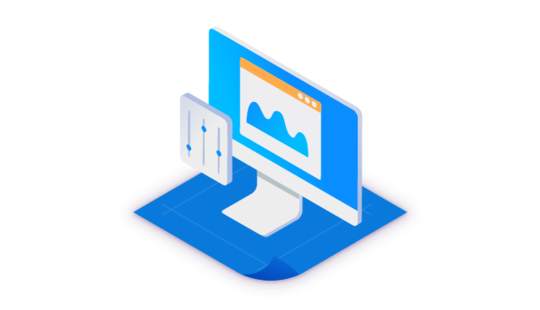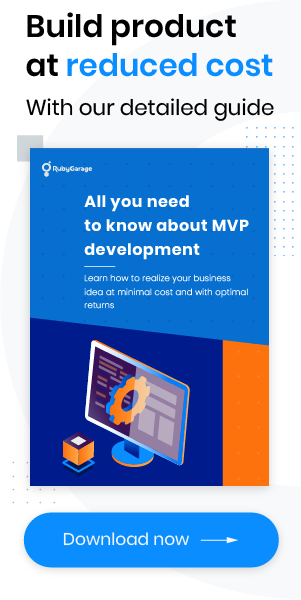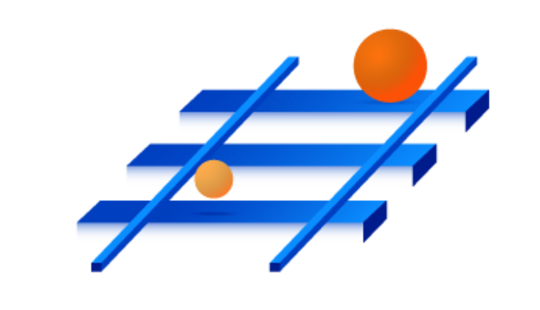-
Product Management
Software Testing
Technology Consulting
-
Multi-Vendor Marketplace
Online StoreCreate an online store with unique design and features at minimal cost using our MarketAge solutionCustom MarketplaceGet a unique, scalable, and cost-effective online marketplace with minimum time to marketTelemedicine SoftwareGet a cost-efficient, HIPAA-compliant telemedicine solution tailored to your facility's requirementsChat AppGet a customizable chat solution to connect users across multiple apps and platformsCustom Booking SystemImprove your business operations and expand to new markets with our appointment booking solutionVideo ConferencingAdjust our video conferencing solution for your business needsFor EnterpriseScale, automate, and improve business processes in your enterprise with our custom software solutionsFor StartupsTurn your startup ideas into viable, value-driven, and commercially successful software solutions -
-
- Case Studies
- Blog
How to Build Project Management Software Like Basecamp, Only Better
If you’ve decided to create your own project management tool, it’s most likely because you’re sick and tired of looking for the perfect tool to make your project management process easier and more efficient that meets all your requirements. You’re not the only one who wants to develop a project management app that’s similar to Basecamp, but better. A lot of teams all over the world have this same thought buzzing in their heads.
But why not use Basecamp?
Basecamp is a hugely popular – and ubiquitous – piece of project management software that doesn’t even need to be introduced. It has a reputation for being user-friendly, and is ideal for simple projects. It’s currently used by more than two million people.
So why do people like Basecamp so much? Project managers like Basecamp because it offers the following features:
- To-do lists
- Personal and team calendars
- File sharing
- Project archiving
- Milestone management
- Forum-like messaging (group discussions)
- Task assignment
- Project templates
- Project permissions
- Mobility
...we have to stop here, because the full list of Basecamp features is long. But despite the many features it offers, Basecamp still lacks some bare necessities. Basecamp project management software still doesn’t offer:
- Cost tracking
- Time tracking
- Gantt charts
- Kanban boards
- Subtasks
- Task dependencies
This isn’t even a full list of necessary features that Basecamp doesn’t have. Keep in mind that Basecamp is intended to help you manage only certain types of projects. It doesn’t have to be good for each individual project manager and for each individual project.
The same story can be told about other project management software packages: one size doesn’t truly fit all. Trello, Jira, and Asana are used by millions – and loved (most of the time). But there are still some common complaints about these tools. Here are some of examples:
- We’re ready to make concessions and adapt our workflow to the chosen software, but it doesn’t allow us to optimize (it’s not flexible);
- This software lacks features we do need but has a lot of features we don’t need;
- Our workflow is entirely unique, and there’s no tool that perfectly complements it.
All companies are unique. They manage their projects in their own unique ways. No wonder it’s hard to find a universally suitable tool. But you can always build your own project management software that your own company can be completely satisfied with.
How to Build Your Own Software for Project Management
So how can you create your own project management software like Basecamp, only better? The first step is to understand your own workflow.
Define Your Workflow
Your workflow is the process you use to reach your goal. In a software development company, for example, your project is likely to be divided into a number of tasks. All these tasks generally have to go through several stages, such as:

Each task should be further classified into several discrete stages (states) such as:

We also define all transitions allowed between task states. Also, don’t forget to figure out reverse transitions, for instance if a task “in development” hasn’t been approved and should be re-developed:

Keep in mind that you also have to define what user roles are allowed to perform each transition.
We’ve shown you the basics of a workflow. Now let’s see what a clearly defined workflow shows:
- A clear and repeatable process that brings results;
- A clear division of responsibility between different people;
- A simple method to communicate processes to all employees.
Defining your own workflow is the first and the most important step you should take if you want to build your own project management software. You should also pay attention to all possible scenarios while trying to keep your workflow as simple as possible.
Keep in mind that your own project management software is just a tool that complements your workflow. So if your workflow is poorly defined, your software won’t be able to help you manage your projects in an efficient and simple way.
Once you’ve defined your own workflow, we can move to the next step: creating a list of features to include in your project management tool.
Common Features of Project Management Software
Some PM software lacks certain features you need while at the same time offering an abundance of features you don’t need. This is frustrating. But there is a common set of features that make any project management app a project management app, and not some other sort of product. Let’s look at these core features.
Task Management
Task management is one of the key features that every project manager needs to plan and schedule a project. This feature lets project managers define tasks, assign them to team members, set priorities, and monitor deadlines.
Collaboration and File Sharing
The majority of tasks are accomplished by several people at different stages. For example, after I wrote the first draft of this article, I sent it to the editor who left her feedback. Once the second draft was almost ready, our SEO specialist went through it to check for keywords. Collaboration is important for most teams, so it’s significant to have a place where teams can collaborate and solve issues together. It’s also nice to have a file sharing feature to enable team members to upload and store files, calendars, and contacts, and also have the ability to share these files externally.
Time Tracking
Time tracking enables users to track time spent on tasks. This feature is crucial for calculating your team’s productivity. It allows project managers to keep track of costs while enabling stakeholders to estimate time in advance. Time tracking functionality should also let team members log the time they devote to each task and make notes about what was accomplished during that time.
Reporting
Reporting helps you successfully manage your projects, giving you a thorough overview – and a complete picture – of your project’s progress. You can also share this progress with the right people.
Additional Features of Project Management Software
Here are some advanced tools that you may like in your project management software, but they are entirely optional:
Invoicing
Invoicing allows you to track payments and expenses and generate invoices for your clients that they can then pay directly within your app (using PayPal, for example).
Budgeting
Of course you can use an Excel spreadsheet for budgeting, but don’t forget that the larger the project, the more expenses you need to document and manage. Having budgeting functionality integrated in your project management software can help you control costs and time more easily. Not all teams require this functionality, however.
Gantt Charts
Gantt charts give you a detailed visual of the progress of all your tasks in comparison to what was initially planned. They can also show you dependencies between different tasks and allow you to edit existing dependencies or set up new ones. Gantt charts are mostly needed for high-level planning.
Portfolio Management
Portfolio Management lets you forecast roadmaps for the project, manage team resources, and track progress with real-time planning. For example, a lot of software development companies have so-called "labs" or R&D projects that they use to acquire expertise in chosen areas. With the help of Portfolio Management functionalities, these companies can evaluate their decisions regarding R&D projects and select those that will provide expected ROI. This feature, as well as Gantt charts, is intended for high-level planning.
Advanced Task Management
Advanced task management tools can create automated workflows, automatically assign tasks, and alert stakeholders via email. They also let you create subtasks, manage, prioritize, and automate them. Advanced task management is helpful if you work on difficult projects and need to do a lot of high-level planning.
APIs
Teams normally use a lot of software other than their project management tool to help them work better. But all these apps can be integrated into your project management tool. Slack, Trello, and GitHub are examples of apps that you can integrate into your project management tool.
Issue Tracking and Bug Tracking
Issue tracking and bug tracking features let you submit, track, and fix bugs and issues that software projects are bound to generate. They help you easily configure the status and workflow of the bug life cycle.
We could go on with potential features forever. But it’s not the features themselves that matter, but rather what your software can help your team achieve – better results for your work. Before writing a list of features you want, ask yourself one question: are they really helpful and relevant? If they are, then send your requirements for your project management software to your development team!
We recommend starting your project management software development with an MVP (Minimum Viable Product). Your product’s MVP will let you test it on your own team, get their feedback, and make adjustments and improvements.
Create a List of Requirements for Your Development Team
Now that you’ve defined your workflow and identified the features that are essential for your own project management tool, you can put all this information together and start creating a list of requirements. We’ll offer several suggestions of how you can do this.
First, structure all the information about your future product. You might create a simple feature list that gives your development team a general picture of your product. Next, you have to define dependencies between components in the system, i.e. how these system components interact with each other. To do this you might create simple Activity Diagrams. If you can provide your development team with wireframes, that will also be very helpful, as it will let them understand your vision for how the UX will be designed.
To clarify how specific features or parts of your system should work, you can create User Stories (which, roughly speaking, describe the main scenarios/goals that users accomplish with a given feature). User Stories are accompanied by Use Cases, which are lists of specific scenarios in which this functionality is intended to be used. The more detailed your description of each case is, the clearer your development team’s understanding of the system will be.
Building your own project management tool may seem like a big deal. But in fact it’s quite doable. Just start by following the steps we’ve defined in this article, figure out your workflow, and then select the features that complement it. You’ll be impressed by the results! If you still have any questions, or if you want us to help you build the project management software of your dream, just drop us a line.










